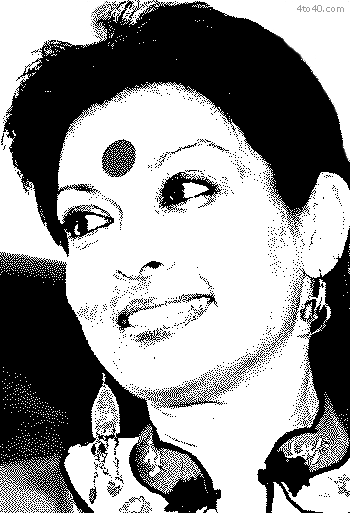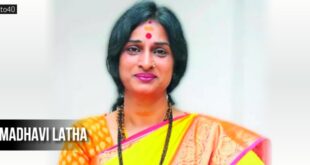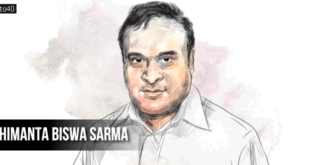 Mallika Sarabhai, one of the leading exponents of Bharatnatyam and Kuchipudi, is the daughter of the dancing legend Mrinalini Sarabhai and the renowned scientist Vikram Sarabhai. A multifaceted personality, Mallika is not only a dancer, but also a noted film-maker, internationally known choreographer, an actress, a TV anchor, an editor, a publisher and so on. Throughout her different careers dancing has remained her first love.
Mallika Sarabhai, one of the leading exponents of Bharatnatyam and Kuchipudi, is the daughter of the dancing legend Mrinalini Sarabhai and the renowned scientist Vikram Sarabhai. A multifaceted personality, Mallika is not only a dancer, but also a noted film-maker, internationally known choreographer, an actress, a TV anchor, an editor, a publisher and so on. Throughout her different careers dancing has remained her first love.
Mallika started her acting career when she was fifteen and starred in Gujarati and Hindi films. She has also played the role of Draupadi in Peter Brooke’s film ‘Mahabharata’, which was made in English and French. After completing her graduation, Mallika entered into the world of performing arts. She followed the foot steps of her mother and places herself firmly at the cutting edge of Indian dance and dance theatre. Along with her other interests, she took her Masters in Business Administration from the Indian Institute of Management, Ahmedabad and a doctorate in organisational behaviour.
Mallika, along with her mother co-directs the Darpana Academy of Performing arts in Ahmedabad, a unique centre for the arts which has performed all over India and abroad. Today the academy has many faces; the Darpana Performance Group, the Janavak Folk and Tribal Dance Company, Darpana for Development, Darpana Communications, the Darpana Conservatoire etc .
Mallika received her first award in 1977. She was the recipient of the “French Palme D’or”, the highest civilian award by the French Government and in Paris she was honoured as the ‘Best Soloist Artist’ among 400 dancers from 25 countries among other awards.
Personally she is a strong character with her own ideas and she feels that dance is a living language which you can interpret the way you think best. She has learned both the theory and practice of dance and her experiments include compositions like Draupadi, Shakti – The Power of Woman, Sita’s Daughters, Itan Kahani, Aspiration, Ganga, Surya etc. Whatever field she is involved in, be it an activist, writer, instigator of community projects, anchorperson of magazines or TV channels, painting with her feet, Mallika is so full of energy that she excels in it.
The Dancer
At the root of Mallika’s performance is her expertise and deep knowledge of two forms of Indian classical dance, Bharatanatyam and Kuchipudi from Tamil Nadu and Andhra Pradesh respectively. As a young woman she won international awards for her classical dance, and she is still learning items from her gurus, some of which she alone in the world can perform.
Even in these forms she has rejected items which she feels stem from overtly patriarchal periods and which represent women as subservient, and has put together pieces celebrating the strength of the goddesses of the Hindu pantheon.
This is still the main element of her performance life, whether at international festivals or local cultural events, and the warmth and life with which she imbues these forms keeps her much in demand.
The Choreographer
In Indian dance there is no great tradition of creative choreography. It was Mrinalini Sarabhai who first used the Bharatanatyam vocabulary to speak of moods and themes other than the traditional devotional ones. She talked of bride burning and of pollution in her dance dramas. Mallika performed in these and absorbed the ideas but it is only in the last decade that she has started to choreograph herself, her company and even her mother. As she started to crystallize what it was she wanted to express through her work she drew on many elements to create her choreographic vocabulary. Of course the elements of her classical dance were there, but so were the rhythms and steps from the work of her folk dance company. She studied martial art forms from South India and from North East India, she observed and stylized everyday movements and gestures until she could create pieces which react to communal violence in India (“Mean Streets on Earth”), which celebrate rituals behind her dance (Thattukazhi), or the rites of passage of a woman (Ceremony I”). In these, and many more, she is still experimenting with other musics, with video accompaniment, with multi-arts forms. In a very real sense these interdisciplinary works are deeply in the tradition of Indian performance, and now these works too are being invited around the world.
The Theatre-Maker
Just as her choreography looks at issues of social importance, Mallika’s theatre work has evolved into a new and vital form challenging people’s preconceptions. Using her natural charm and with, a strong voice and her ability for story- telling and for directly addressing her audience with conviction, as well as her movement and dance skills, serious subjects have been tackled in a burst of refreshing work.
During her performance as Draupadi in Peter Brook’s Mahabharata, she became aware of the need to make strong and positive statements about images of Indian womanhood, to counter the often misleading accounts by male commentators. This led to her creating “Shakti – The power of Women “ in London which subsequently toured Britain, Holland and India.
Its reappraisal of mythological, historical and contemporary female figures had stunning effect on audiences and quickly led to a second piece, “Sita’s Daughters”, which is an even harder hitting (although often very funny) piece about women who refuse to accept an oppressive system. This piece was performed all over India from slums to metropolitan festivals and has been invited to Singapore, USA and Britain.
Using similar skills she teamed up with Nigerian performer Peter Badejo to throw light onto matters of cultural manipulation in the highly successful “Itan Kahani- The story of stories”. This was followed by a very ambitious project, a new piece blowing some fresh air through the subject of why we commit violence “V for…”. In April ‘99 came “In Search of the Goddess” commissioned by the Smithsonian Institution, Washington DC.
In recent years Mallika has managed to apply her artistic talents to her desire for social change in a series of unique projects. Working with terms of her most experienced Darpana performers, and training dozens of her rural and traditional artists, she has instituted programmes of using the performing arts to examine gender awareness, issues of violence and environmental issues in schools. AIDS awareness in slum areas and witch killing in rural areas. These interactive projects bring artists together with sociologists, scientists and local people to make challenging programmes often leading to community performance.
 Kids Portal For Parents India Kids Network
Kids Portal For Parents India Kids Network






